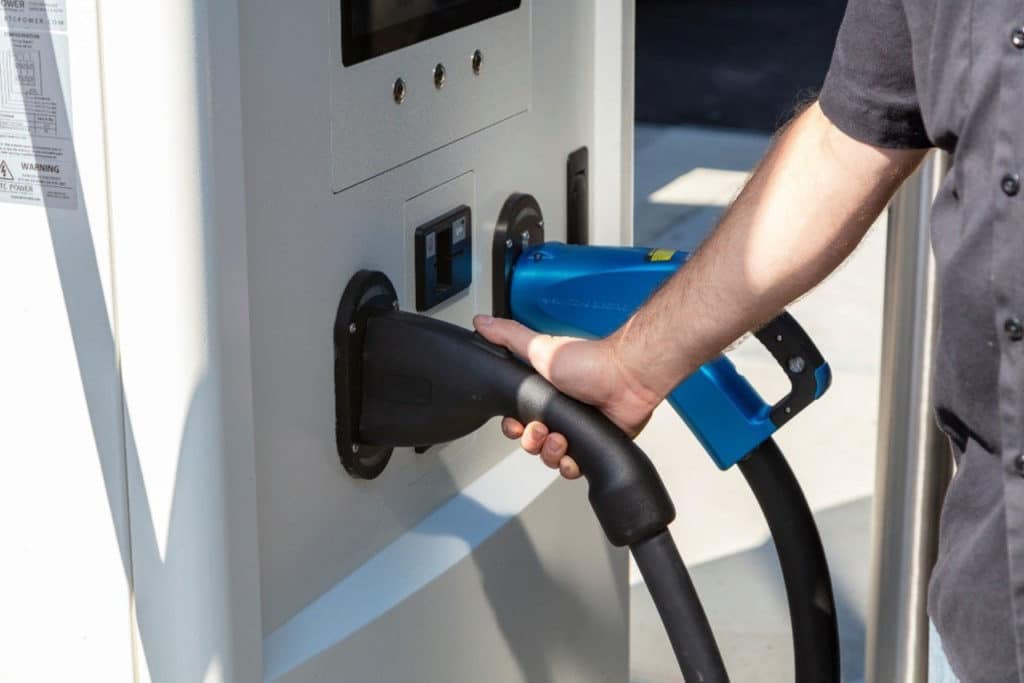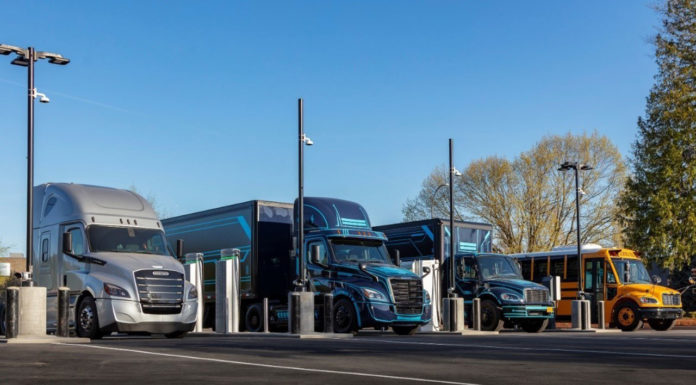Daimler and Portland General Electric (PGE) has opened to the public the first-of-its-kind heavy-duty electric truck charging site, called “Electric Island.” Announced last December, Electric Island is designed to accelerate the development, testing, and deployment of zero-emissions (tank to wheel) commercial vehicles.
Electric Island offers eight-vehicle charging stations for electric cars, buses, box vans, and semi-trucks, including the Freightliner eCascadia and eM2 trucks made by Daimler Trucks North America (DTNA). A majority of these charging stations are available for public use. The site is just 7.2 km from downtown Portland and is located directly across the street from the DTNA headquarters.
The focus of the Electric Island is to specifically serve medium and heavy-duty trucks aligned with the so-called West Coast Clean Transit Corridor Initiative (WCCTCI). It is a collaboration between nine electric utilities, and two government agencies that yielded a strategic plan in 2020 to electrify 1,300 miles of I-5 across the three West Coast states to provide publicly available charging for freight and delivery trucks.

In addition to being a place built to immediately provide charging for EVs of all shapes and sizes, the Electric Island will, according to a statement, “allow both PGE and DTNA to study energy management, charger use and performance, and, in the case of DTNA, its own vehicles’ charging performance.”
The site will inform each company’s efforts by studying the future of heavy-duty charging, including:
- Use of vehicle chargers featuring power delivery of up to over one megawatt (over four times faster than today’s fastest light-duty vehicle chargers), enabling PGE and DTNA to develop best practices for cost-effective future deployments;
- Integration of heavy-duty charging technology into PGE’s Smart Grid, such as vehicle-to-grid technologies, second-life use of Daimler’s battery packs and onsite energy generation; and
- Testing information technology opportunities like fleet and energy management by captive solutions and services.
Additional plans for future onsite energy storage, solar power generation, and a product and technology showcase building remain under development.
